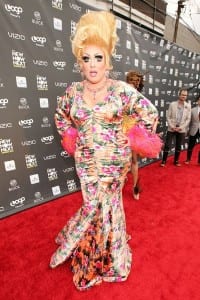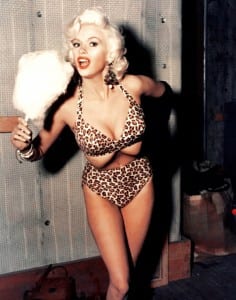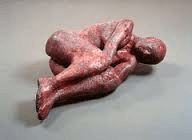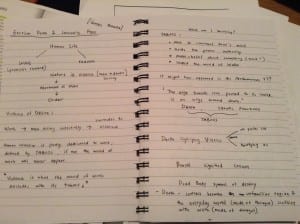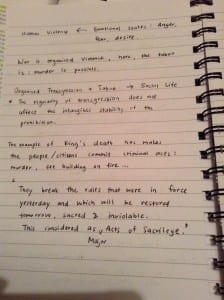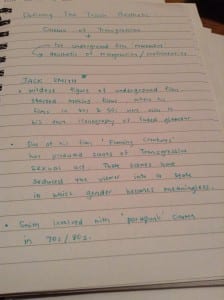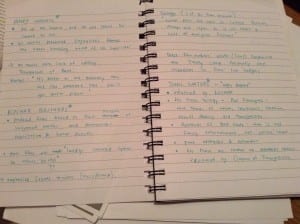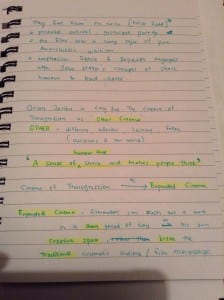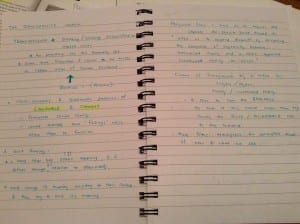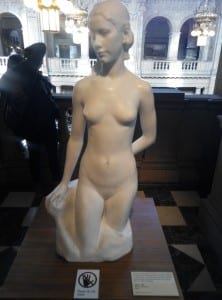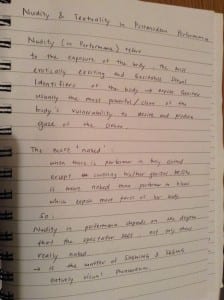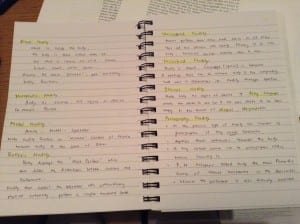LECTURE 6 CAMP & QUEER AESTHETICS
CAMP
understanding CAMP : is an aesthetic sensibility that regards something as appealing or humorous because of its ridiculousness to the viewer.[1] Camp aesthetics disrupt many modernists’ notions of what art is and what can be classified as high art by inverting aesthetic attributes such as beauty, value and taste through an invitation of a different kind of apprehension and consumption. Such as entertainments like film, cabaret and pantomime.
According to the writer, Camp is the love of its unnatural: artifice and exaggeration.
Camp is not really about beauty, but the degree of artifice and of stylisation. It can be discover in objects, and behaviour of persons. Camp eyes has the power to transform experience, but not all the time control by the creator.
Camp Art is often decorative art, emphasising texture, sensuous surface, and style of content. Therefore concert music rarely Camp because it is contentless.
Camp is actually about taste. Taste is a human response, like the in people, visual taste, taste in motion, taste in acts, in morality, intelligence, in ideas. Taste tends to develop very unevenly.
Logic of taste: the consistent Sensibility which underlies and gives rise to a certain taste.
A statement from the writer: to perceive CAMP in objects and persons is to understand Being-as-Playing-a-Role. like ‘not a woman, but a “woman”.’
The great period of Camp was in late 17th and early 18th, period that people have extraordinary feeling for artifice, for surface, for symmetry. Mannerist artist like Pontormo, Rosso and Caravaggio, theatrical painter like Georges de La Tour, Euphuism in literature.
Writer said that when a person / a thing is ‘a camp’, it has produced duplicity. Behind the ‘straight’ public sense, one has found a private weird/zany experience of the thing.
Writing also mentioned that artists that create Camp are unintentional (purposely create it) but they are very serious in their work. For example of the Warner Brothers musicals are not meant to be funny.
The words for camp: Seriousness that fails, proper mixture of exaggerate, the fantastic, the passionate and the naive, spirit of extravagance, innocent, instant character
‘A work can come close to Camp, but not make it, because it succeeds.’ some works like films were so exaggerate but end up they succeed, if they were a little more ‘off’ they could be great camp.
Camp is considered as among the great creative sensibilities (that with seriousness), the Sensibility of Failed Seriousness. It refuses harmonies of traditional seriousness (the high culture, the high art). Camp: victory of Style over Content, Aesthetics over Morality, Irony over Tragedy.
The whole point of Camp is to remove the power of serious. It is playful, it involves a new and more complex relation to the serious.
‘The camp insists on not being ‘serious’, like homosexual’s desire to remain youthful.’
What camp does is to find the success in certain passionate failures. Less judgement.
My opinion, Camp is so connected/similar to Failure theories where we find the diamond in shit, find the precious from a trashy/failure works.
UNDIAGNOSING GENDER
This article was saying that transsexuality is not a disorder, and that trans people need to understand the it is a practice of self-determination, an exercise of autonomy (a condition of self-government). But no one achieves autonomy without the assistance or support of a community in the process of transitioning.
For those transsexual people, some assumes that certain gender norms have not been properly embodied by them & fail to conform to existing norms, and a failure has taken place.
The feeling of transitioning become possible and desirable when there is the presence of a supportive community. A supportive communities as a transsexual. This communities can be consider as new cultural that made to broaden those norms (transsexual).
This article discuss about transsexual in a more scientific lens.
GESTURE, EPHEMERA, AND QUEER FEELING: APPROACHING KEVIN AVIANCE by JOSE ESTEBAN MUNOZ
As mentioned by the writer, historically, queer evidence was used to penalise and discipline queer desires, connections and acts.
The key to queering evidence (prove and read queerness) is by the concept of ephemera.
Define Ephemera: things that not lasting, more than a day. (paper, ticket, catalogue…)
Ephemeral evidence is not really obvious because it needed to stand against the mainstream visibility and the potential tyranny (cruel rule/government) of the fact (often cast antinormative desire as the bad object).
The main element of showing the sphere of queer experience is GESTURE.
Dance floor – as a stage for queer performativity that is integral(fundamental) to everyday life. It is also a space where the relations between memory & content, self & other were intertwined. In the dance floor, they exchange the kinesthetic experience through which we become less like Ourselves and more like Each other.
Writer was comparing Kevin Aviance (famous queer performer in nightclubs) and Charlier Chaplin and saying that both are master of queer gesture where their gesture speaks loud and clear.
Gestures transmit ephemeral knowledge of lost queer histories and possibilities within public culture.
Then, the writer gives an ephemeral evidence by providing a personal experience of a gay man. How he was being teased by his family and friends about his non-normative way of walking and gesture, and how he started to studied the different ways of walking and gesture of man and woman and try to learn the ‘correct’ way of movement as a boy.
‘We cannot simply conserve a person or a performance through documentation, we can perhaps summon up through memory, the acts and gestures that meant so much to us. ‘ this sentence was used to explain about the poem in this article. To me, it somehow like explaining ephemeral evidence.
Queerness itself as being filled with the intention to be lost, lost in the space or lost in relation to the space of heteronormativity . To accept loss is to accept queerness, loss of heteronormativity authorisation and entitlement.
The writer describe the way Kevin Aviance was performing, the way he dressed, and the way he danced. He is an amplified and extreme queer body, a body in motion that rapidly deploys the signs, the gestures of queer communication, survival, and self-making. Said the writer.
Further more, his performance is an unique cohabitation of tractional female and male traits, which he does not wear wig and audience still able to identified his genital with the shape. To perform such a hybrid gender is not only to be queer but to defy troubling gender logics within gay spaces.
Queer theory has made explicitly clear: the set of behaviours and codes of conduct that we refer to as feminine or masculine are not slaves to the biological.
The writer conclude the article with saying that however the performance ends but the gesture and the ephemeral trace becomes the queer history and futurity. The gesture expires, its materiality has transformed into ephemera that are utterly necessary.
LECTURE 7 BOREDOM
BEING BORING by KENNETH GOLDSMITH
‘I allowed myself no creative liberties with the text.’ an inspiring statement for me to think about creating artwork.
I was thinking that almost all artist trying so hard to be creative while creating art, what happen if we not allow to use our creativity at all while making an art? It’s that possible? Can that be a way of create failure work?
John Cage suggested that if something is boring after 2 minutes, try it for 4, then 8, then an hour, then 2 hours. Eventually one discovers that it is not boring at all. There is certain kind of unbarring boredom that is fascinating and transcendent. It sounds like failure performance, where we look for the good stuff from a trashy performance.
Another kind of boring is called boring boring by the writer. It is like being somewhere we don’t want to be/ doing something we don’t want to do.
Unboring boring is a voluntary state, like we volunteer to watch a butoh show for example.
Writer gives an example of typing word. When someone is volunteer to type and someone is being forced to type, there is a distinction. There is a difference between voluntary and involuntary boredom.
It makes me think of Martin O’Brien endurance class. Where he forced us to do the exercise for a long period of time and which we are not really willing to do, it was an involuntary boredom somehow.
BOREDOM: Siegfried Kracauer
Kracauer wrote a book call Boredom in 1924, anticipated modern everyday life as a culture of distraction. Where so many exciting and interesting things surround us. This environment of modernity is made up of commodified forms of communication (adverts, films, radio..) which aggressively impress.introduce the audience.
Boredom outcome is by its critical refusal.
The failure of bored in such a culture marks the success of distraction.
They come out with this statement: to declare yourself bored is not a mark of failure but the necessary precondition the possibility of generating authentically new (completely new rather than the old dressed up as the new).
LECTURE 8 PARTICIPATION
The Genealogy of Participatory Art
Participatory practice is one of the main characteristics of contemporary art.
In this article, it questioned about how modern art functions, the radical separation of artists and their public.
In the early Romantic era, poets and artists were complaint about the separation of art from its audience (this separation was a result of the secularisation of art, paternalism and censorship), the normative idea is: the artist produce art, the public views and evaluates it. Artist=active, audience=passive.
Writer has made a comparison between art with science and technology. If an artwork did not favour the public, it somehow devoid its value. It has no merit other than the recognition from the public. Unlike science and technology, it has no compelling function independent of its audience, it is about fact somehow.
Richard Wagner has mentioned that the typical artist in his time is an egoist who is completely isolated from the life of the people and practices his art. He suggested that the artwork of the future must realise the need for ‘the passing over of Egoism into Communism’, therefore artist should abandon their social isolation.
‘The death of the author’. It is impossible to differentiate participatory and non participatory art, because this can occur through the surrender of authorship by the artist. The enactment of the self-abduction grants the author the possibility of controlling the audience, whereby viewer forfeits his secure external position, viewer not just participant but also an integral part of the artwork. Therefore, participatory art can be understood not only as reduction, but also as an extension of authorial power.
Futurists and Zurich Dadaists were pursued the dissolution of artistic individuality and authority of their practices. They were more direct when it came to activating their audience, such as scandalising or attacking the audience members physically.
